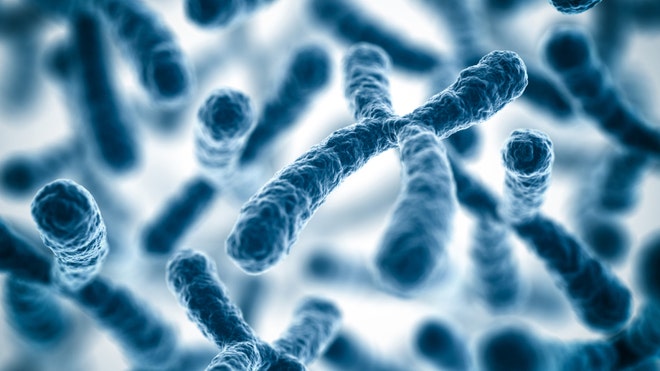 Undoing Down syndrome? Compound Reverses Learning Deficits in Mice with Trisomy 21 Traits
Undoing Down syndrome? Compound Reverses Learning Deficits in Mice with Trisomy 21 Traits
For people with trisomy 21 – more commonly known as Down syndrome – learning and remembering important concepts can be a struggle, since some of their brain’s structures do not develop as fully as they should.
But now, researchers may have found a way to reverse the learning deficits associated with Down syndrome, after having discovered a compound that can significantly bolster cognition in mice with a condition very similar to trisomy 21.
In a new study published in the Sept. 4 issue of Science Translational Medicine, scientists injected a small molecule known as a sonic hedgehog pathway agonist into the brains of genetically engineered mice on the day of their birth. The treatment enabled the rodents’ cerebellums to grow to a normal size, allowing them to perform just as well as unmodified mice in behavioral tests.
“We’ve been working for some time to characterize the basis for how people with trisomy 21 diverge in development from people without trisomy 21,” Roger Reeves, a professor in the McKusick-Nathans Institute of Genetic Medicine at the Johns Hopkins University School of Medicine, told FoxNews.com. “One of the early things we see is that people with Down syndrome have very small cerebellums, which does a lot more things than we used to think it did.”
Down syndrome is a condition that occurs when people receive three – rather than the typical two – copies of chromosome 21. Because of this “trisomy,” Down syndrome patients have extra copies of the more than 300 genes contained in that chromosome. This leads to a range of symptoms, including mild to moderate intellectual disability, distinct facial features, heart defects and other health problems.
Through previous research, Reeves found that another distinct trait of people with Down syndrome is a cerebellum that’s approximately 60 percent of the normal size. In order for this important brain region to grow and form, a small population of cells in the brain must quickly divide and multiply shortly after birth. This cell population requires a specific growth factor known as the sonic hedgehog pathway to stimulate the cells, triggering them to divide.
However, the trisomic cells in people with Down syndrome do not respond as well to this growth factor, stunting the development of the cerebellum – a region of the brain found to be important in cognitive processing and emotional control.
“We thought if we could stimulate these cells a bit at birth, we could make up the deficit,” Reeves said.
To test this theory, Reeves and his research team created a series of genetically engineered mice, all of which had extra copies of about half of the genes found in chromosome 21. According to Reeves, this caused the mice to have many of the same characteristics seen in patients with Down syndrome, such as a smaller cerebellum and learning difficulties.
The researchers then injected the mice with a sonic hedgehog pathway agonist, which stimulates the growth factor pathway needed to trigger cerebellum development. The compound was given to the mice just once on the day of birth.
“From that one injection, we were able to normalize the growth of the cerebellum, and they continued to have a structurally normal cerebellum when they grew up,” Reeves said.
Going one step further, the researchers conducted a series of behavioral tests on the mice to better understand how normalizing this brain structure would affect their overall performance. One of these tests was the Morris water maze test, an experiment that involves placing the mice in a pool of water and seeing how long it takes them to escape using a platform hidden below the water’s surface. The test measures the rodents’ spatial learning and memory capabilities, which are primarily controlled by the hippocampus.
“We didn’t expect to see any results from that,” Reeves said. “We knew that the most potent effects of the growth factor were in the specific cells (in the cerebellum) we were targeting, but it turned out that the mice that got a single shot of this agonist at birth, when tested three months later, they performed just as well as their (unmodified) litter mates in the water maze test.”
The sonic hedgehog agonist has yet to be proven effective in humans with Down syndrome, and future research is needed to determine exactly how the injection improved the mice’s cognitive abilities and whether or not the agonist has any side effects. But Reeves remains hopeful that these findings could have translational potential.
“We’re on the verge of a revolution for expanding the potential of people born with trisomy 21,” Reeves said.
Loren Grush - Fox News